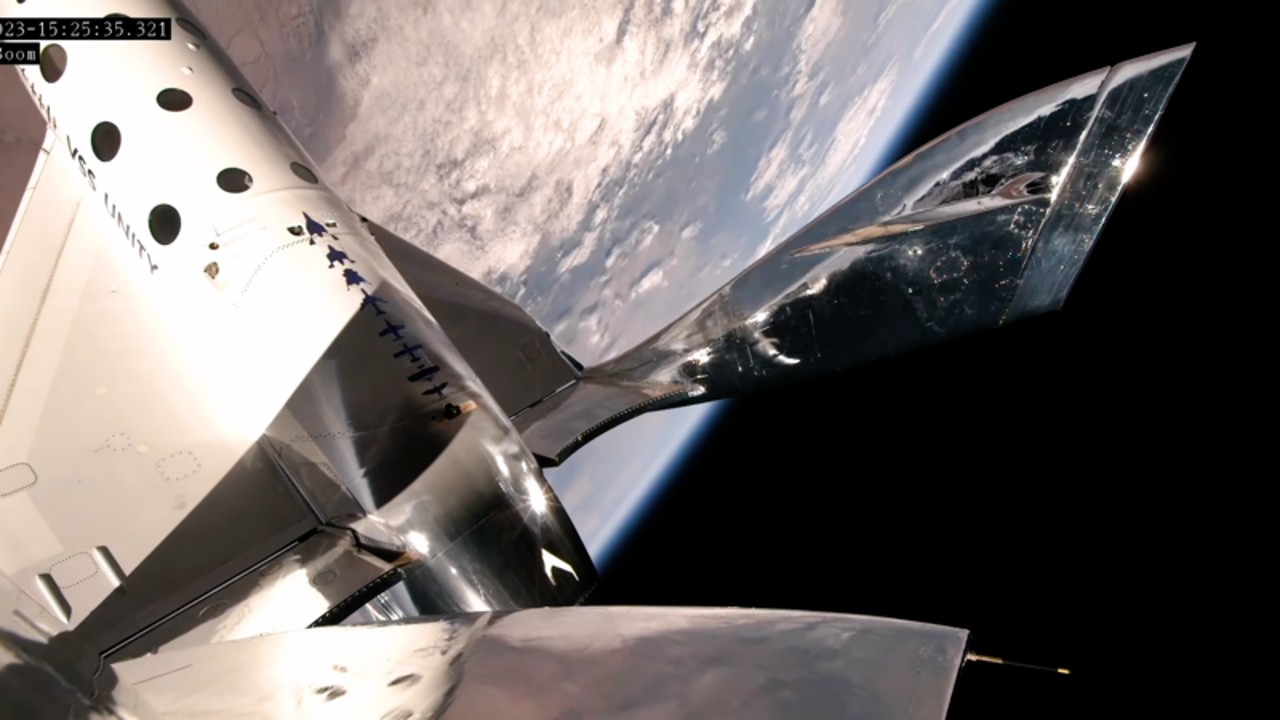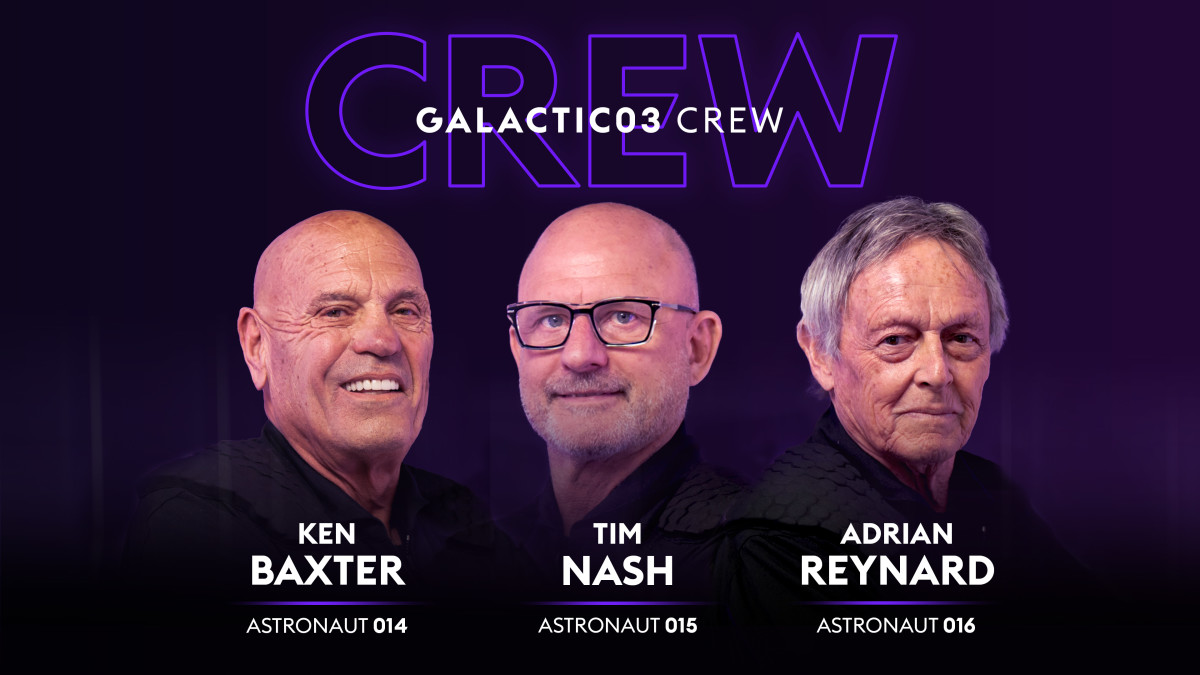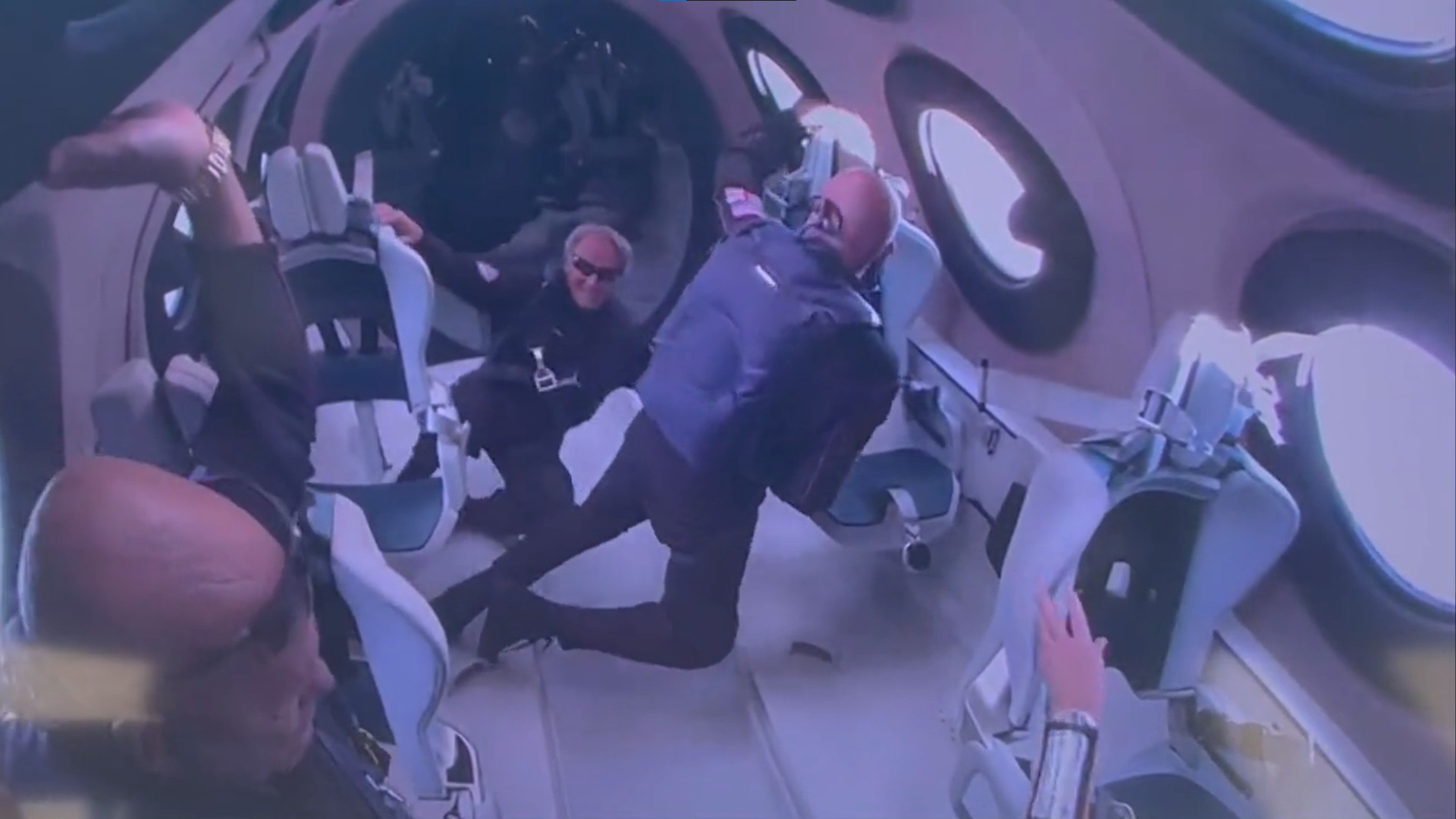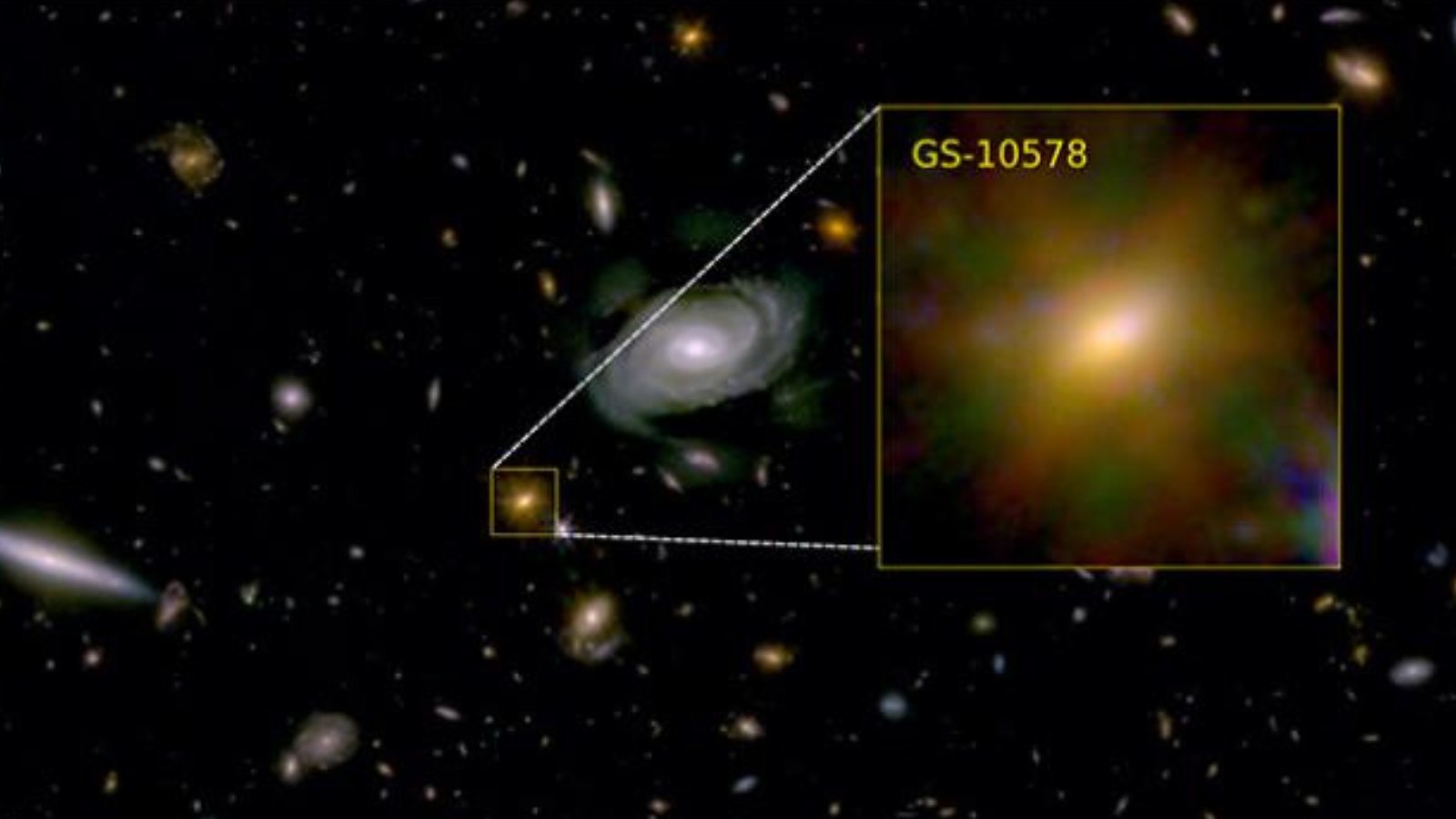Virgin Galactic launches 3 of its original space tourist customers to the final frontier (video)
Virgin Galactic now has three commercial spaceflights under its belt.
The company launched its Galactic 03 mission today (Sept. 8), sending three of its longest-standing ticketholders to suborbital space from Spaceport America in New Mexico.
"Welcome back to Earth, #Galactic03! Our pilots, crew and spaceship have landed safely at @Spaceport_NM," the company wrote in a post on X (formerly known as Twitter) after the flight concluded.
The flight began at 10:34 a.m. EDT (1434 GMT) today, when Virgin Galactic's VSS Unity space plane lifted off beneath the wings its carrier craft, VMS Eve. Eve dropped Unity as planned at an altitude of 44,867 feet (13,675 meters), and the space plane then made its own way to the final frontier.
Aboard Unity were the three paying customers, who were among the first people to buy a ticket to fly with the company. They booked their seats as early as 2005, Virgin Galactic said in a preflight statement. (Virgin Galactic charged $200,000 per seat back in 2005, compared to $450,000 today.)
The passengers were investor Ken Baxter from the United States, the first person to buy a civilian ticket for a Virgin Galactic tourist flight; Timothy Nash, an investor from South Africa; and Adrian Reynard, founder of Reynard Motorsport, from the United Kingdom.
Breaking space news, the latest updates on rocket launches, skywatching events and more!
The trio flew in Unity's cabin with Beth Moses, the company's chief astronaut instructor. In the space plane's cockpit were pilots Nicola Pecile and Michael Masucci.
The Galactic 03 crew experienced a few minutes of weightlessness and got to see Earth against the blackness of space. Their experience came to an end at 11:36 a.m. EDT (1536 GMT), when Unity touched down back at Spaceport America.
Virgin Galactic didn't livestream today's mission; it provided the above details via social media updates. The company also did not identify the three Galactic 03 customers in the days leading up to liftoff, which was a departure from previous procedures.
The Galactic 03 trio just became Virgin Galactic's 14th, 15th and 16th astronauts. The company has now flown three commercial missions in less than three months, and eight spaceflights overall. The other two commercial flights, Galactic 01 and Galactic 02, launched on June 29 and Aug. 10, respectively.
Virgin Galactic plans to continue launching Unity roughly once per month for the foreseeable future. But the cadence will pick up considerably a few years from now, if all goes according to plan: In 2026, Virgin Galactic plans to start bringing online its new "Delta class" of space planes, which will be capable of flying once per week.
Virgin Galactic has one chief competitor in the suborbital tourism business: Jeff Bezos' Blue Origin, which flies people to the final frontier aboard its New Shepard vehicle. But New Shepard hasn't flown in nearly a year; the craft suffered an anomaly during an uncrewed research flight on Sept. 12, 2022 and hasn't left the ground since.
Editor's note: This story was updated at 3:15 p.m. EDT on Sept. 8 with flight statistics provided by Virgin Galactic. It was also corrected to state that Beth Moses, not Colin Bennett, was the astronaut instructor on board today's flight.

Michael Wall is a Senior Space Writer with Space.com and joined the team in 2010. He primarily covers exoplanets, spaceflight and military space, but has been known to dabble in the space art beat. His book about the search for alien life, "Out There," was published on Nov. 13, 2018. Before becoming a science writer, Michael worked as a herpetologist and wildlife biologist. He has a Ph.D. in evolutionary biology from the University of Sydney, Australia, a bachelor's degree from the University of Arizona, and a graduate certificate in science writing from the University of California, Santa Cruz. To find out what his latest project is, you can follow Michael on Twitter.




